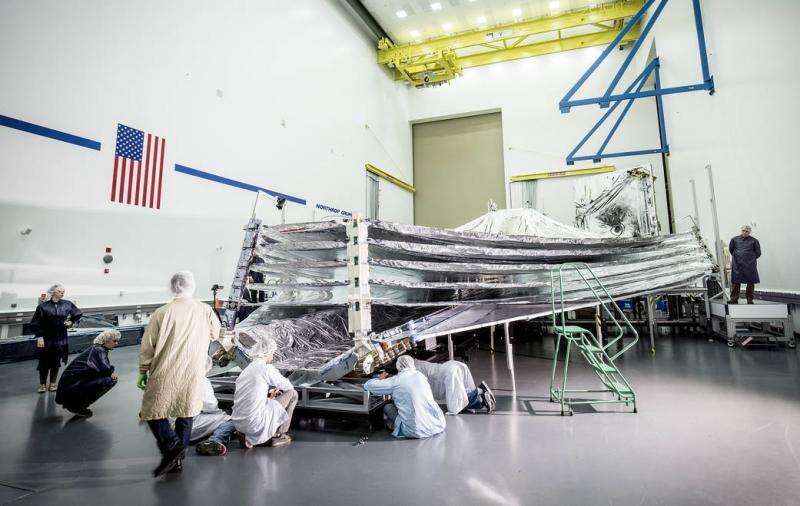A mechanical harmony to NASA's Webb Telescope sunshield

NASA's James Webb Space Telescope has a giant custom-built, kite-shaped sunshield driven by mechanics that will fold and unfold with a harmonious synchronicity 1 million miles from Earth.
Like a car, many mechanical pieces in the Webb telescope's sunshield will work together to open it from its stored folded position in the rocket that will carry it into space.
According to car manufacturers, a single car can have about 30,000 parts, counting every part down to the smallest screws. Like getting all of the parts in a car to operate together, the mechanical parts of the sunshield have to work in the same way.
The sunshield support structure contains well over 7,000 flight parts, including springs, bearings, pulleys, magnets, etc. In addition, the sunshield has hundreds of custom fabricated pieces. Most mechanical pieces were developed exclusively for the sunshield, with a few from existing designs.
There are about 150 mechanism assemblies that have to function properly to fully deploy the sunshield. Within those mechanism assemblies, there are numerous small parts that work in harmony. The smaller parts include about 140 release actuators, approximately 70 hinge assemblies, eight deployment motors, scores of bearings, springs and gears, about 400 pulleys and 90 cables. These mechanisms release the sunshield membranes from their folded and stowed launch configuration, deploy the supporting structures, and unfold and tension the membrane layers. In addition there are hundreds of magnets and clips to manage the membrane shape and volume during deployment, and many sensors to tell engineers that each deployment step has been completed.
"The process of opening or deploying the sunshield in space is a multi-step process," said James Cooper, Webb telescope sunshield manager at NASA's Goddard Space Flight Center in Greenbelt, Maryland.
Each step of the deployment will be manually initiated from engineers on Earth. That sequence runs automatically to its completion (with automated stoppage in case of a fault), then the system waits for the next command.
It will be like conducting an orchestra from a million miles away. "Thousands of components work together to deploy the sunshield," Cooper said.
The mechanisms that separate each of the sunshield's five layers do so with precision. Near the center of the sunshield each layer is separated by only a couple inches, but the layer-to-layer gap increases as you move away from the center, to about a foot between layers around the edges. It will take nearly two days to fully deploy the sunshield system when in orbit.
The Webb telescope state-of-the-art composite structure that supports the sunshield "operates with Swiss watch-like precision," said Paul Geithner, Webb telescope technical manager at Goddard. "The engineering of the sunshield is an intricate system with a simple but not easy-to-do purpose."
The stowed sunshield fits inside of a 5-meter (16.4-foot) rocket fairing, folded up against the sides of the telescope. When deployed in space it's about the size of a tennis court (about 21 meters by 14.5 meters, or 68.9 feet by 47.5 feet).
"There has never been a composite structure this large and complex (for a NASA mission)," Cooper said.
Provided by NASA




















